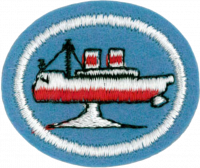Difference between revisions of "AY Honors/Model Boats/Answer Key/es"
(Created page with "{{HonorSubpage}} <section begin="Body" /> {{ansreq|page={{#titleparts:{{PAGENAME}}|2|1}}|num=1}} <noinclude><div lang="en" dir="ltr" class="mw-content-ltr"> </noinclude> <!--...") |
(Created page with "</noinclude> <!-- 1. Hacer dos de los siguientes: --> <noinclude>") |
||
| Line 2: | Line 2: | ||
<section begin="Body" /> | <section begin="Body" /> | ||
{{ansreq|page={{#titleparts:{{PAGENAME}}|2|1}}|num=1}} | {{ansreq|page={{#titleparts:{{PAGENAME}}|2|1}}|num=1}} | ||
| − | <noinclude> | + | <noinclude></noinclude> |
| − | </noinclude> | + | <!-- 1. Hacer dos de los siguientes: --> |
| − | <!-- 1. | + | <noinclude></noinclude> |
| − | <noinclude | ||
| − | |||
{{ansreq|page={{#titleparts:{{PAGENAME}}|2|1}}|num=1a}} | {{ansreq|page={{#titleparts:{{PAGENAME}}|2|1}}|num=1a}} | ||
| − | <noinclude> | + | <noinclude></noinclude> |
| − | </noinclude | ||
| − | |||
<div lang="en" dir="ltr" class="mw-content-ltr"> | <div lang="en" dir="ltr" class="mw-content-ltr"> | ||
| Line 16: | Line 12: | ||
</div> | </div> | ||
| − | + | <noinclude></noinclude> | |
| − | <noinclude | ||
| − | |||
{{CloseReq}} <!-- 1a --> | {{CloseReq}} <!-- 1a --> | ||
{{ansreq|page={{#titleparts:{{PAGENAME}}|2|1}}|num=1b}} <!--T:3--> | {{ansreq|page={{#titleparts:{{PAGENAME}}|2|1}}|num=1b}} <!--T:3--> | ||
| − | <noinclude> | + | <noinclude></noinclude> |
| − | </noinclude | ||
| − | |||
| − | + | {{clear}} | |
| − | |||
| − | |||
| − | + | <noinclude></noinclude> | |
| − | <noinclude | ||
| − | |||
{{CloseReq}} <!-- 1b --> | {{CloseReq}} <!-- 1b --> | ||
{{ansreq|page={{#titleparts:{{PAGENAME}}|2|1}}|num=1c}} <!--T:5--> | {{ansreq|page={{#titleparts:{{PAGENAME}}|2|1}}|num=1c}} <!--T:5--> | ||
| − | <noinclude> | + | <noinclude></noinclude> |
| − | </noinclude | ||
| − | |||
| − | + | {{clear}} | |
| − | |||
| − | |||
| − | + | <noinclude></noinclude> | |
| − | <noinclude | ||
| − | |||
{{CloseReq}} <!-- 1c --> | {{CloseReq}} <!-- 1c --> | ||
{{CloseReq}} <!-- 1 --> | {{CloseReq}} <!-- 1 --> | ||
Revision as of 16:32, 28 April 2021
Nivel de destreza
2
Año
1991
Version
23.11.2024
Autoridad de aprobación
Asociación General
1
1a
Many model boats are pre-built ready to display, while many kits are meant to sit on a shelf, not sail. None of these are useful for this Honor. Try a search for working model boat kits and radio controlled model boats.
1b
1c
2
2a
Displacement is the volume of water a boat's hull moves out of the way when it floats. The displaced water is the same weight as the boat as long as the boat is floating. If the boat sinks then the amount of water being displaced is equal to the volume of the boat instead of the weight.
2b
The center of gravity is a geometric property of any object. The center of gravity is the average location of the weight of an object.http://www.grc.nasa.gov/WWW/k-12/airplane/cg.html
2c
Propeller pitch is the distance a propeller would move in one revolution if it were moving through a soft solid, like a screw through wood. For example, a 21-pitch propeller would move forward 21 inches in one revolution.
2d
Thrust is the force exerted by a propeller to move a boat through the water. As the boat moves forward, it may experience lift, which is a force that will raise the boat slightly.
2e
2f
A hydroplane (or hydro, or thunderboat) is a fast motorboat, where the hull shape is such that at speed, the weight of the boat is supported by planing forces, rather than simple buoyancy.
A key aspect of hydroplanes is that they use the water they are on for lift rather than buoyancy, as well as for propulsion and steering: when travelling at high speed water is forced downwards by the bottom of the boat's hull. The water therefore exerts an equal and opposite force upwards, lifting the vast majority of the hull out of the water. This process, happening at the surface of the water, is known as ‘planing’.
2g
The front of the boat.
2h
has two distinct meanings related to two different types of boats: one a riverine cargo-capable working boat, and the other a classification for small- to mid-sized recreational sailing yachts.
2i
The wide, usually flat area at the very back of a boat. This is where an outboard motor is typically mounted. This is also where you usually find the name of the boat on larger vessels.
2j
Inefficient low-pressure pockets on propellers form bubbles that collapse against the blades resulting in premature wear. Cavitation causes vibration, noise and serious damage to a propeller.
2k
Heeling is normal, sideways tipping. Heeling is a result of the force of wind on the sails. Some heeling is inherent in sailing; as the force of the wind is transferred into forward motion, any excess is transferred into sideways motion, some of which is slippage and some of which is heeling. A boat that has too much sail set so that it heels over beyond a certain angle will sail less efficiently.
When a boat is heeled, the center of effort changes. The center of effort is the pivot point of the sails and is related to the center of lateral resistance, which is below the waterline. One way to reduce heeling is to move the center of lateral resistance upwards by raising the centerboard or daggerboard. The boat will have less resistance below the waterline and consequently less heel.
2l
Planing is the mode of operation for a waterborne craft in which its weight is predominantly supported by hydro-dynamic lift, rather than hydro-static lift (buoyancy). See Hydro above. Some types of sailboats can plane too.
2m
The force on the sails is broken down into two components: lift (which acts perpendicular to the wind direction) and drag (which acts parallel to the wind direction). Lift and drag are defined as acting in these two directions;




